If you’re experiencing poor handling, excessive body roll, or unusual noises when turning, it might be time to consider a sway bar replacement.
The sway bar, also known as an anti-roll bar or stabilizer bar, plays a crucial role in maintaining vehicle stability by minimizing body movement during sharp turns or uneven road conditions.
Over time, wear and tear can lead to damage, affecting your vehicle’s performance and safety.
In this article, we’ll break down the average sway bar replacement cost, factors that influence the pricing, and what to expect during the repair process to help you make an informed decision.
What is a sway bar?
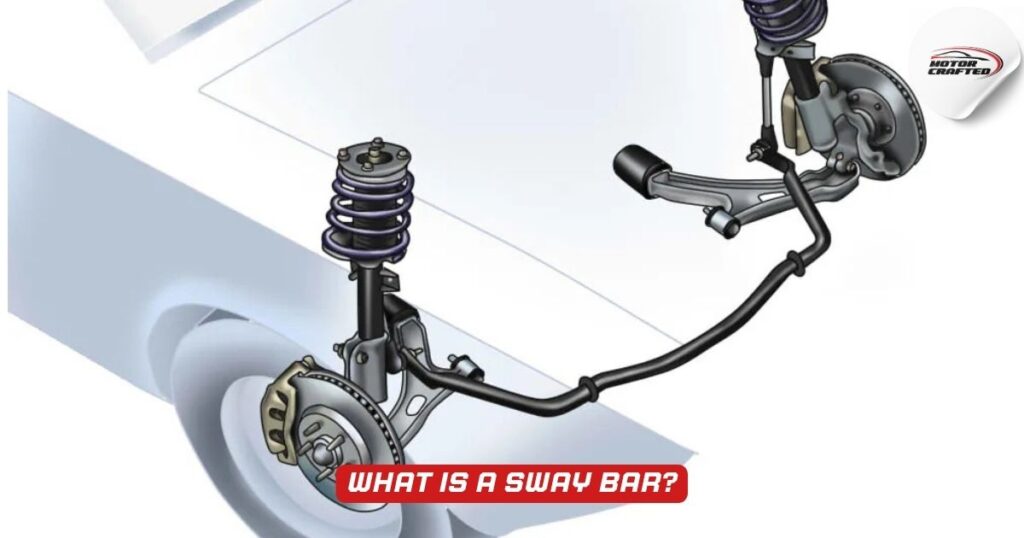
A sway bar, also known as an anti-roll bar or stabilizer bar, is a vital component of a vehicle’s suspension system.
It connects the left and right wheels of a vehicle through short lever arms linked by a torsion spring.
The main function of the sway bar is to reduce body roll when a vehicle is cornering or driving over uneven surfaces.
When the car turns, the sway bar distributes the force evenly to maintain balance and improve handling.
Most vehicles have at least one sway bar, usually in the front suspension system, though many modern cars also include one in the rear.
These bars are typically made of solid or hollow steel to resist twisting. While the sway bar itself is a durable component, its bushings and end links are more prone to wear and may need replacement more frequently.
If the sway bar or its related components become damaged or worn out, you may experience excessive body lean, clunking noises during turns, or reduced stability.
In short, the sway bar plays an essential role in your vehicle’s safety and driving comfort, especially when navigating curves or bumpy roads.
How much does it cost to replace a sway bar?
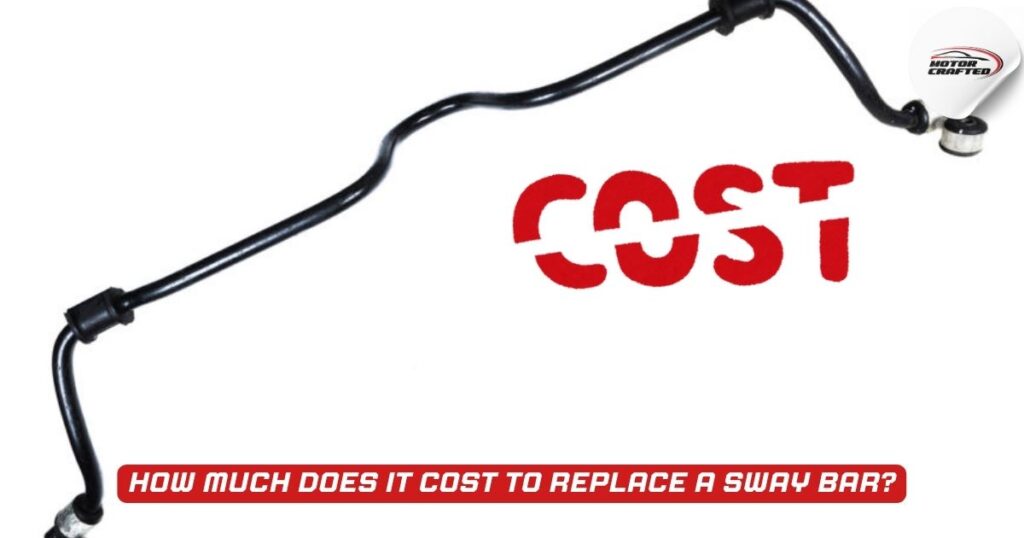
The cost to replace a sway bar can vary depending on several factors, including the make and model of your vehicle, labor costs in your area, and whether you are replacing the entire sway bar or just the sway bar links or bushings.
On average, the total replacement cost for a sway bar ranges from $125 to $400, with parts costing between $50 to $150 and labor costs typically falling between $75 to $250.
Luxury or performance vehicles tend to have higher replacement costs due to specialized parts or more complex suspension systems.
Additionally, if both the front and rear sway bars need to be replaced, the overall expense could double.
If only the end links or bushings are damaged, which is more common, you might only pay $40 to $150 for parts and labor.
In such cases, a full sway bar replacement is not necessary, which significantly reduces the cost.
DIY enthusiasts can lower the cost by installing the part themselves, provided they have the necessary tools and experience.
However, for safety reasons, it’s often best to have suspension repairs handled by a qualified mechanic.
What does a sway bar do?

The sway bar serves a crucial function in vehicle safety and handling by reducing body roll during cornering.
When a car turns, its weight shifts to the outer wheels, which can cause the body to lean or roll.
The sway bar transfers some of this force to the opposite side, helping to keep the vehicle level and improve tire contact with the road.
Without a functional sway bar, your vehicle would feel much less stable during turns, increasing the risk of losing control, especially at higher speeds or during emergency maneuvers.
This is why performance and safety are significantly impacted when sway bar components wear out or break.
Another important role of the sway bar is improving ride comfort. On uneven surfaces, the sway bar helps balance out forces between the two sides of the vehicle, reducing the jarring motion that passengers feel inside the cabin.
Ultimately, the sway bar works in harmony with other suspension components like struts, shocks, and control arms to keep your car planted, predictable, and safe under varying driving conditions. It’s a small but essential part of a vehicle’s overall suspension architecture.
How do I know if my sway bar is broken?
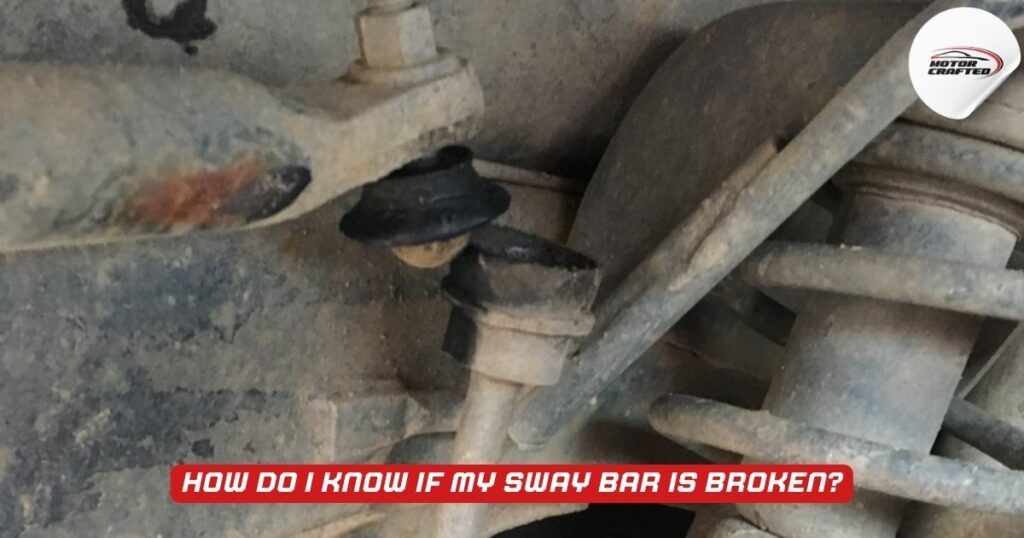
Recognizing the signs of a broken or failing sway bar is important to avoid unsafe driving conditions.
The most common symptoms include clunking or rattling noises, especially when going over bumps or turning corners.
These sounds often indicate that the sway bar links or bushings are worn out or disconnected.
Another clear sign is excessive body roll during turns. If your car leans more than usual or feels unstable when cornering, the sway bar may not be functioning properly.
You might also notice uneven tire wear, which can result from poor suspension performance.
In severe cases, a broken sway bar can lead to poor alignment or a noticeable change in how your vehicle handles.
It may feel loose or unpredictable, particularly during high-speed driving or quick direction changes. Some drivers also report difficulty maintaining control in windy conditions or when changing lanes.
To confirm the issue, a mechanic can perform a visual inspection. A broken sway bar or disconnected end link is often visible without needing to dismantle the suspension.
Early detection and timely replacement can prevent further damage and restore safe handling to your vehicle.
Can I drive with a bad sway bar?
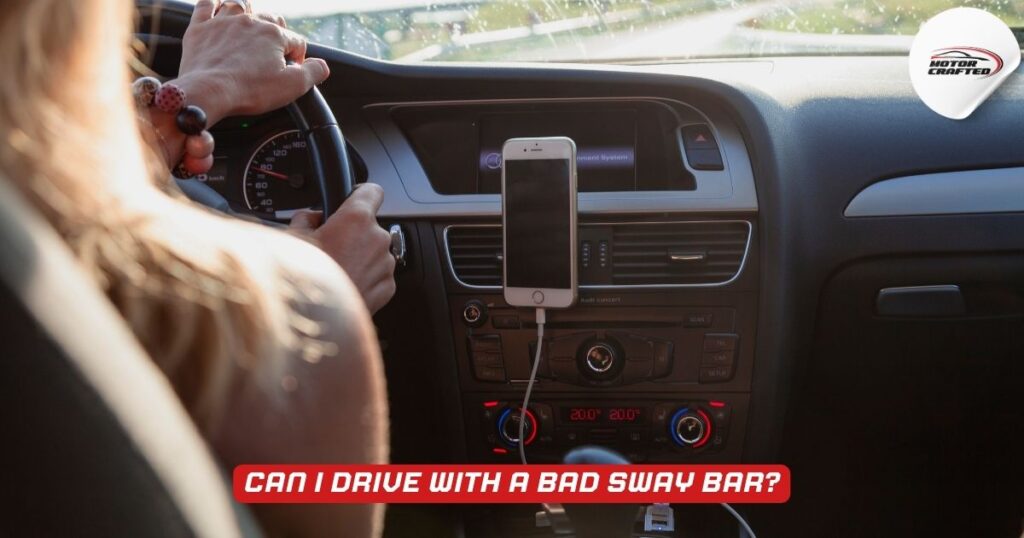
Technically, yes, you can drive with a bad sway bar, but it is not recommended for extended periods or at high speeds.
A damaged or broken sway bar compromises your vehicle’s stability, especially during turns and on uneven roads. This increases your risk of losing control or rolling the vehicle, particularly in emergency maneuvers.
While a sway bar is not essential for the car to move, its role in maintaining balance and even tire pressure distribution is vital for safety.
Driving without a properly working sway bar will result in increased body roll, making the car feel wobbly or top-heavy during lane changes or curves.
Moreover, if the sway bar links or bushings are broken and left unattended, they may cause additional damage to other suspension parts over time.
You may also experience premature tire wear, reduced comfort, and unpredictable handling.
If you suspect an issue with your sway bar, it’s best to drive cautiously and have the vehicle inspected and repaired as soon as possible.
Continuing to drive with a failing sway bar could turn a minor repair into a much costlier suspension issue down the road.
Sway Bar Replacement Cost & Details
| Item | Details |
| Average Replacement Cost | $125 – $400 |
| Parts Cost | $50 – $150 |
| Labor Cost | $75 – $250 |
| Replacement Time | 1 – 2 hours |
| Common Signs of Failure | Clunking noises, body roll, poor cornering |
| Can You Drive With It? | Yes, but not recommended for safety reasons |
| Commonly Replaced Components | Sway bar links, bushings, entire sway bar |
| Worth Replacing? | Yes – improves safety, handling, and stability |
| DIY Friendly? | Possible, but best left to professionals |
How is a sway bar replacement performed?
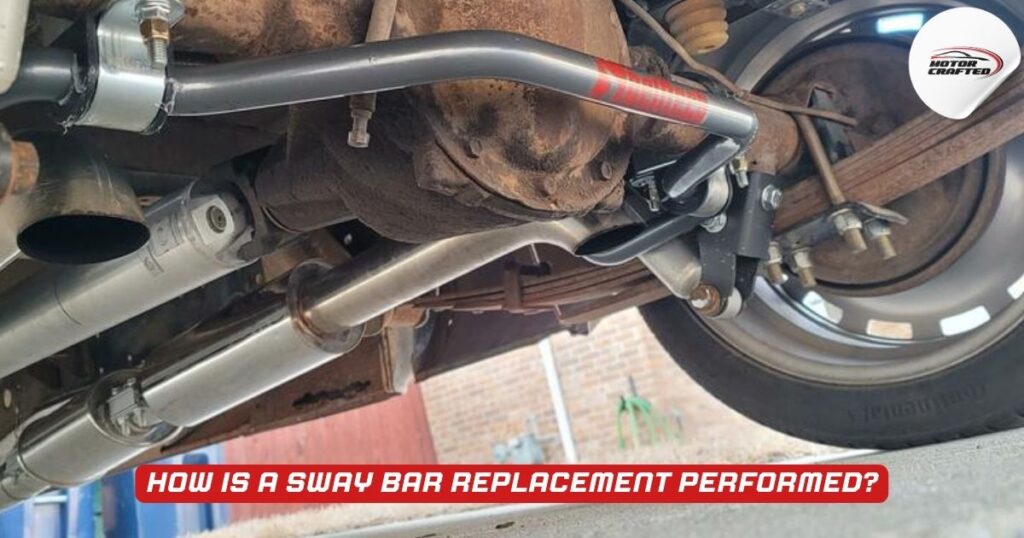
Sway bar replacement is a moderately complex task that involves removing and reinstalling suspension components.
The process begins with raising the vehicle safely on jack stands or a lift. The mechanic then removes the wheels to access the sway bar and its associated components, such as end links and bushings.
If the problem lies with the bushings or end links, only those components are replaced.
The technician will unbolt the damaged parts, clean the mounting points, and install new components using torque specifications recommended by the manufacturer.
If the entire sway bar is damaged or bent, it is removed completely and replaced with a new one.
Once the new sway bar or parts are in place, the mechanic re-checks all connections to ensure everything is tight and secure.
The wheels are then reinstalled, and the car is lowered to the ground. Finally, a test drive is conducted to confirm that the handling has improved and that there are no unusual noises or imbalances.
The entire process typically takes 1 to 2 hours, depending on the vehicle and the complexity of the suspension design.
While it’s possible to do it yourself with the right tools and knowledge, professional installation is often safer and more reliable.
Is it worth replacing a sway bar?
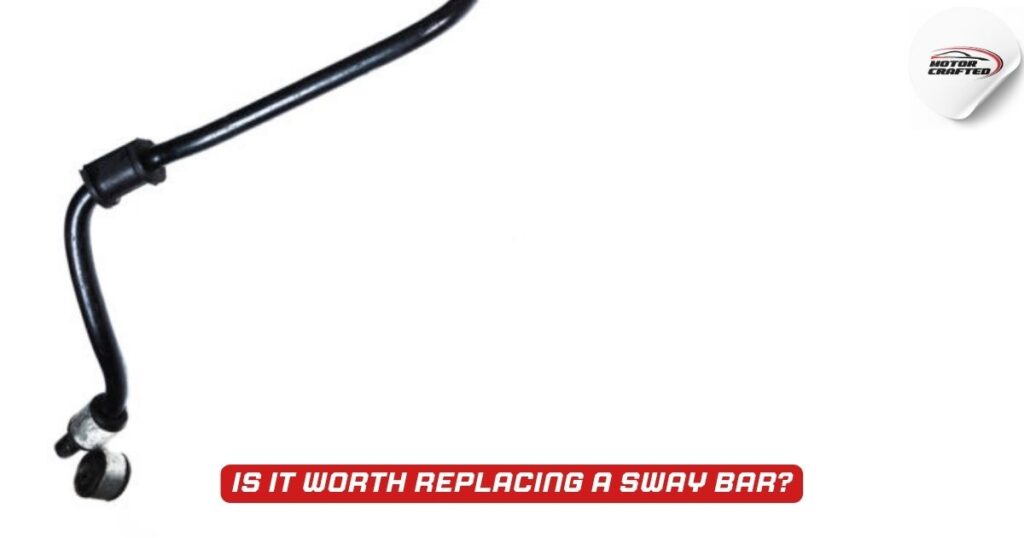
Yes, replacing a sway bar or its components is absolutely worth it—especially when considering the direct impact on your vehicle’s handling, safety, and overall driving experience.
A worn or broken sway bar reduces the vehicle’s ability to stay stable during turns, which can pose a serious risk during emergency maneuvers or high-speed driving.
From a cost perspective, sway bar replacement is relatively affordable compared to more extensive suspension repairs.
Timely replacement of sway bar links or bushings can prevent damage to other components like control arms, shocks, or even tires.
This makes it a cost-effective maintenance task that avoids larger repair bills in the future.
In terms of comfort, a functional sway bar ensures a smoother, more controlled ride, especially on bumpy roads.
If you’re noticing increased body roll, clunking noises, or instability, replacing the sway bar will immediately improve your vehicle’s performance and driving confidence.
For those who value their car’s handling, especially on curvy roads or during long highway drives, investing in a sway bar replacement is a smart and necessary decision.
It not only keeps your vehicle safe but also helps maintain its resale value by ensuring proper suspension health.
Conclusion
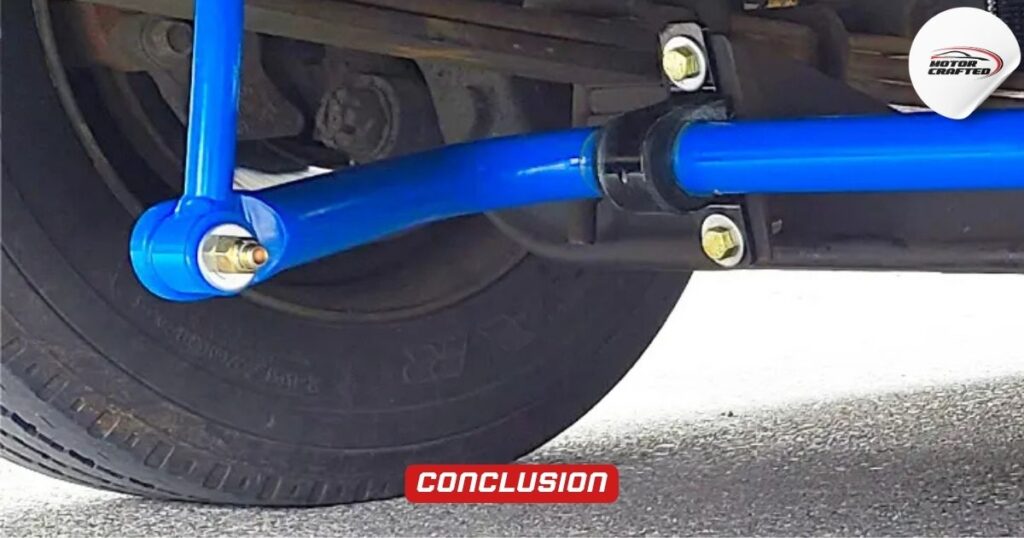
The sway bar is a small yet essential part of your vehicle’s suspension system, directly influencing stability, handling, and safety.
Understanding what it does, the symptoms of failure, and the cost of replacement can help you make better decisions about your vehicle’s maintenance.
While you can drive with a damaged sway bar, doing so puts you at risk of reduced control and further suspension damage.
The good news is that sway bar replacement is typically affordable and straightforward, especially if caught early.
If you’re experiencing any signs of sway bar issues, don’t wait—a timely repair can save you money, improve your ride, and keep you safe on the road.
FAQs
1. How long does it take to replace a sway bar?
Typically, sway bar replacement takes 1 to 2 hours, depending on the vehicle type and whether you’re replacing the whole bar or just its components.
2. Can a bad sway bar affect alignment?
While a bad sway bar doesn’t directly affect alignment, it can cause uneven handling, which may lead to uneven tire wear over time.
3. Do both sway bars need to be replaced at the same time?
Not always. If only one is damaged, you can replace just that one. However, replacing both ensures balanced performance and consistent handling.


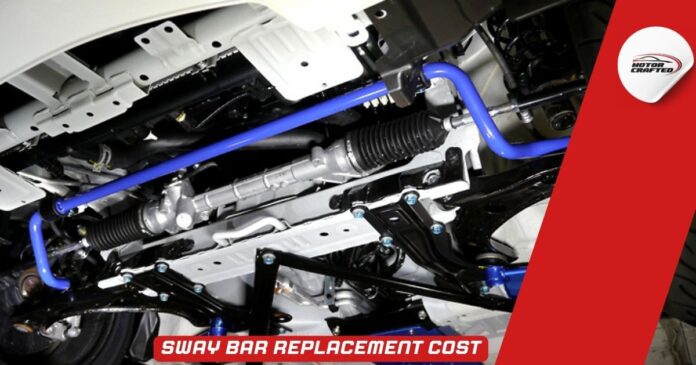
![How To Learn About Cars [2025 Guide] How To Learn About Cars](https://motorcrafted.com/wp-content/uploads/2025/07/How-To-Learn-About-Cars-100x70.jpg)

